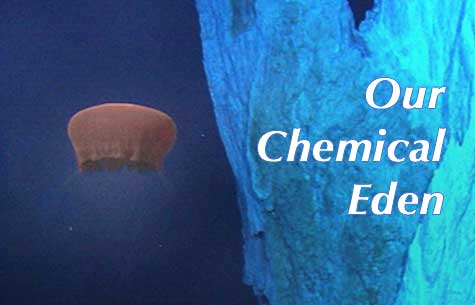Our Chemical Eden explains the beginnings of life in the hydrothermal vents in the ocean deeps.
This has long been my preferred theory and it was good to see it explicated in persuasive new detail.
My previous sources for this theory are THE DEEP HOT BIOSPHERE (1998) by Thomas Gold and QUANTUM EVOLUTION (2001) by John Joe McFadden.
Many leading theories of life’s origins had their roots in Charles Darwin’s speculation of a ‘warm little pond’, in which inanimate matter, energised by heat, sunlight or lightning, formed complex molecules that eventually began reproducing themselves.
For decades, most origin-of-life research has focused on how such self-replicating chemistry could have arisen. They largely brushed aside the other key question, how the first living things obtained the energy to grow, reproduce and evolve to greater complexity.
Life began not as a free-roaming creature, feeding off natural organic molecules drifting in the ocean, but as a tenant that made its own food in the mineral compartments of underwater rocks.
At first, ocean vents were simply sites of geology, gases and dissolved minerals bubbling up to form rocks.
But in the microcompartments of those rocks, something unusual began to happen. The carbon dioxide in the ocean reacted with the hydrogen from the vents. Under typical conditions, this reaction wouldn’t occur, but the minerals in the compartment walls, rich in iron and sulfur, coaxed this reluctant partnership.
These reactions created small organic molecules such as acetyl-CoA, one of the most ancient metabolic pathways ever discovered.
Read the whole article:
https://aeon.co/essays/why-life-is-not-a-thing-but-a-restless-manner-of-being
